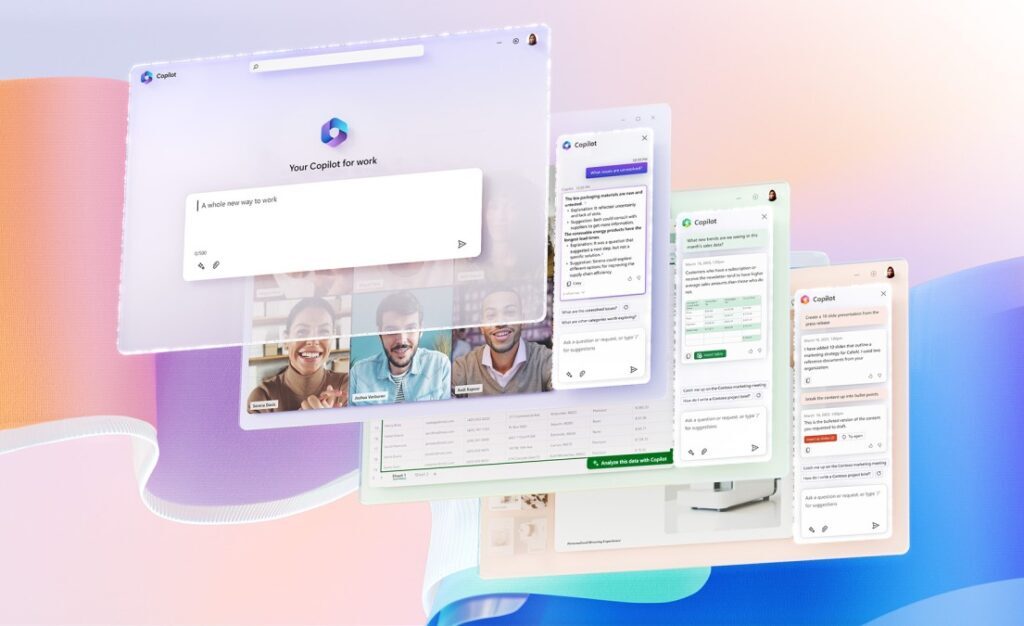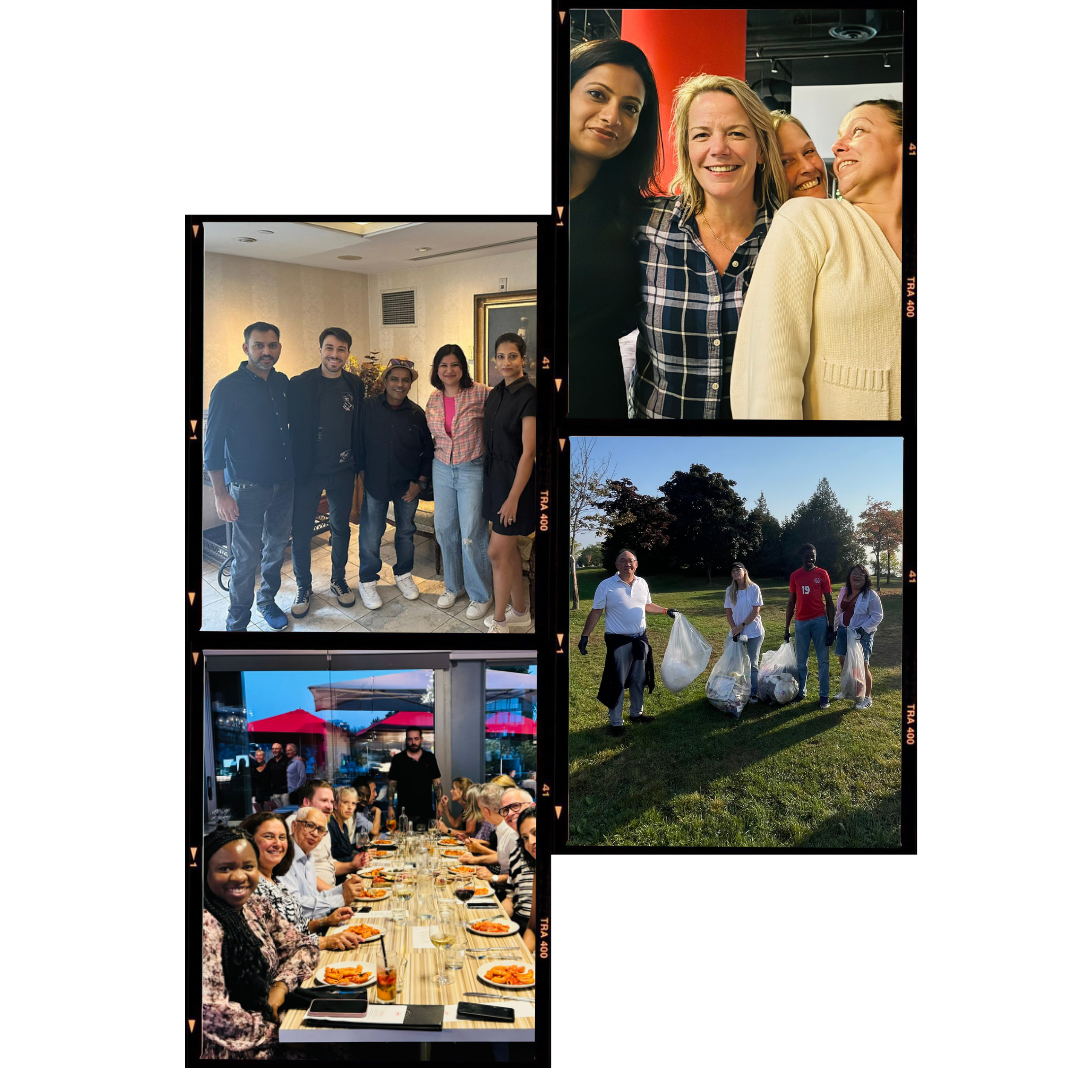The Nonprofit Finance Executive's Guide to ERP
How to select, assess, and implement an ERP system with confidence.
Table of Contents
Section One
Introduction
Nonprofit finance leaders operate under a different set of challenges from their for-profit counterparts. In the nonprofit world, mission and impact are the only motive, but the demand for efficient and tight financial stewardship are just as pressing for many boards and senior leaders.
Financial management is never straightforward, and for non-profits can be complicated by aging, disconnected systems, paper-heavy processes, and overreliance on Excel trackers. Workarounds and manual fixes eat up valuable time that often becomes overtime, leading to employee burnout and taking away focus that could be better spent on program analysis or strategic funding initiatives.

The truth is...
Funders need assurances that their contributions are spent only on certain initiatives. Government agencies demand quarterly or even monthly statements. Boards ask for consolidated dashboards to see big-picture health alongside line-item detail for restricted funds. Without a single system that ties together purchasing, budgeting, grants, and actual spending, every reporting cycle can feel like a fire drill.
Some finance executives take the attitude that it’s “just the way things are”—funding is tight, and they must live with what they have. Or, they know the way that they’re doing things is inefficient and needs to change, but they don’t know where or how to start.
The truth is that better solutions exist, and there is a clear roadmap to get to a place of increased efficiency and impact.
A modern, integrated ERP that is purpose-built for nonprofit needs can save money by drastically reducing manual tasks and errors, ensuring real-time collaboration, and automatically keeping the right eyes on the right spending.
Is your current tangle of finance workarounds draining resources that could otherwise power the mission? Check off any that apply to you and your team:
- We’re heavily reliant on Excel for critical functions like employee expenses, credit card reconciliation, monthly allocations, or tracking restricted funds
- We regularly find ourselves re-entering the same data in multiple spreadsheets or systems
- Our program managers and staff frequently ask finance questions like, “How much budget do I have left?” or “What can I still spend?” because they lack self-service budget visibility into approved spending and encumbrances
- Approvals are often delayed because important information (like budget status or grant restrictions) isn’t readily available to the approver
- Finance approvals are done through interoffice mail where people are coding and signing invoices
- We struggle to produce granular reports for funders or boards without rushing or pulling late nights
- Our department managers keep their own ‘shadow’ systems in Excel or local files to track expenses or budgets, because they don’t have easy access to financial information for programs or departments that they’re responsible for
- We’ve encountered frequent coding errors, like misapplied fund usage or inaccurate program allocations
Section Two
Nonprofit Challenges with ERP
Many nonprofits have tried to adapt off-the-shelf ERP systems with add-ons originally designed for for-profit companies. It may seem like these solutions will cover the basics, like general ledger, accounts payable, accounts receivable, and so on.
But as finance teams soon discover, the edge cases and deeper requirements of nonprofit financial management are left unaddressed.

The result is a patchwork of manual processes...
...to handle things like fund accounting, complex grant cycles, restricted donations, and detailed reporting for multiple stakeholder groups.
This isn’t the fault of the ERP vendors—they built their products to meet for-profit business requirements, and that’s exactly what they do best. But as a result, there are things that nonprofit finance departments need that these ERPs don’t do very well, or don’t do at all.
Grant and Project Accounting
While a for-profit ERP might simply treat all revenue as straightforward income, nonprofits need to track each grant separately—monitoring start and end dates, allowable expenses, compliance mandates, and distinct reporting formats. Without a dedicated module to handle rolling, multi-year grant schedules and real-time budget visibility by grant or program, controllers and finance directors spend excessive time piecing it all together in spreadsheets.
Fund Accounting
In a typical ERP, the assumption is that one chart of accounts with straightforward cost centers is enough. Nonprofits, however, need to manage operating funds, restricted funds, endowments, and more—each often subject to unique rules and compliance requirements. Systems lacking built-in due-to/due-from functionality end up requiring time-consuming journal entries to keep every fund balanced and accurate, with auditable interfund entries.
Employee Expenses and Credit Card Reconciliation
Many nonprofits struggle significantly with employee expenses and credit card reconciliations. Expenses are often managed manually, involving physical receipts, hand-written claims, and cumbersome approval processes. Corporate credit card reconciliations are similarly challenging, requiring tedious matching of transactions with receipts, manual coding, and potential oversights, which can cause issues with compliance, timely payments, and audits.
ON-DEMAND WEBINAR
Simplify Credit Card Reconciliation & Expense Claims
Manual reconciliation and paper-based expense claims don’t belong in modern nonprofit finance.
If your current process is eating up time, increasing errors, or just plain frustrating your team, it’s time to explore a smarter way to manage credit card reconciliation and employee expenses—built for nonprofits like yours.
WATCH THE WEBINAR
Procurement
An ERP built for commercial supply chains might handle ordering and receiving well enough, but nonprofits also need requisition management that enforces budget checks for each purchase request. The ability to see whether a proposed expense would surpass a program’s spending limit—before any PO or invoice is created—helps nonprofits remain compliant and prevents overspending. Conversely, this functionality helps nonprofits see how much budget is left to spend at any given time. Without that function, finance teams rely on tedious manual sign-offs, after-the-fact approvals, and frequent, manual budget updates to provide to program managers.
Specialized Reporting and Analytics
Nonprofits face extra hurdles when reporting time rolls around. Rather than standard profit/loss statements, they need to produce specialized funder reports, outcomes-based budgets, and compliance-driven exports. A non-specialized ERP rarely has robust dimension tracking or the flexible, multi-level chart of accounts needed to slice data by program, location, and funding source at once.
The Result: More Holes to Patch
Ultimately, most nonprofits that try to force a base ERP to handle their intricate funding structures and specialized compliance tasks come away with extra overhead, partial workarounds, and delayed data insights. A finance system designed specifically and comprehensively for nonprofit workflows can spare organizations from constant, reactive “fixes” and adjustments, letting teams focus on mission and impact instead.
SECTION THREE
How to Build a Vendor Checklist
Essentials of a Nonprofit ERP
If a base ERP often falls short in handling nonprofit requirements, how can nonprofits assess the capabilities of a specialized ERP? If you’re considering an investment as significant as ERP, identifying what truly matters to your nonprofit is essential. Consider the following focus areas to compile a vendor checklist that’s built for nonprofit realities.

1. Fund Accounting and Dimension-Based COA
- True Fund Segregation: Automatically manage due-to/due-from entries for restricted, unrestricted, capital, or endowment funds in real time.
- Multiple Dimensions: Go beyond simple department codes to categorize transactions by program, grant, location, or campaign. Filter or consolidate these for precise reporting.
- Hybrid Chart of Accounts: Retain a clean GL structure while adding necessary layers of complexity for nonprofit accounting, avoiding a segmented Chart of Accounts and the inefficiencies that approach causes.
- Restrictions and Validation: Ensure that each transaction only posts to valid fund–dimension combinations, preventing coding errors and preserving data integrity.
2. Budgeting
- Multi-Level Budget Plans: Create operating, capital, or project-level budgets, each with distinct timelines and targets. Consolidate them for board or executive reporting.
- Collaborative Budget Contribution: Allow department managers to propose and adjust their own budgets, feeding into a master set for final review.
- Scenario Planning: Run different “what-if” scenarios (such as new grants, mid-year budget cuts) and lock down final versions with approvals.
- Real-Time Budget Checks: Warn or block transactions that would exceed available funding before invoices or POs are processed.
- Encumbrances and Commitments: Reserve funding as soon as a requisition is approved or a purchase order is issued, giving immediate visibility into committed vs. uncommitted funds and encumbrances.
3. Project/Grant Tracking
- Grant Life Cycle Management: Track multi-year start and end dates, allowable expense categories, cost matching requirements, and iterative reporting deadlines.
- Flexible Cost Allocations: Distribute overhead or shared costs to multiple projects or grants based on percentages, employee headcount, or any other definable metric.
- Automated Close-outs: Finalize grants and projects accurately, ensuring no further costs are charged once funding periods end.
4. Approval Workflows and Audit Trails
- Dimension-Aware Approvals: Route requests for purchases, invoices, or journal entries based on grant, fund, or program codes, enforcing multi-tiered sign-off where needed.
- Automated Notifications: Send email or system alerts to relevant stakeholders when approvals are pending.
- Comprehensive Audit Trails: Track each step of an approval or change, storing time-stamped notes for reviewers, compliance officers, and auditors.
- Alternate Approvals and Delegates: Ensure continuity when primary approvers are out of office by designating backups with clear permissions.
5. Credit Card Reconciliation and Employee Expenses
- Automated Receipt Capture: Employees can digitally upload receipts, automatically matching them to credit card charges and expense claims, reducing manual entry and errors.
- Streamlined Approval Workflow: Built-in approval routing based on expense type, amount, or project/grant allocation, ensuring timely approvals, clear audit trails, and compliance with internal policies.
- Integrated Credit Card Transaction Reconciliation: Direct import and matching of corporate card statements against employee-submitted expenses, minimizing manual coding and significantly reducing reconciliation time.
- Real-Time Expense Visibility and Budget Checking: Instant budget validation and visibility for both employees and managers, enabling accurate tracking against grants, programs, and organizational budgets, and helping prevent overspending.
- Enhanced Accountability: Streamline transaction-handling and integrate employee accountability into your workflows.
6. Reporting, Analytics, and Integration
- Fund/Grant-Specific Reports: Easily generate compliance documents for different funders or regulatory bodies, each with unique format requirements.
- Real-Time, Access-Controlled Dashboards: Give executives, board members, program managers, and end-users role-based insight into up-to-date budget usage, commitments, and fundraising performance.
- API/Data Export: Integrate with donor management, CRM, HR, or other software without repetitive imports or reentry. Maintain a “single source of truth.”
- Advanced Analytics: Use dimension-based pivoting, embedded BI tools, and “what-if” modeling to evaluate performance and anticipate funding gaps or overages.
7. Cloud Security and Data Governance
- Multi-Layer Access Controls: Restrict users by fund, dimension, or module. Compliance and Encryption: Host data in secure environments that meet CASL, CAN-SPAM, GDPR, or other relevant data privacy standards.
- Automatic Updates and Backups: Stay current with the latest functionality and security patches without large, disruptive upgrade projects.
- Disaster Recovery: Safeguard finance data in real-time with replication, redundancy, and restore capabilities, ensuring a near-constant uptime of critical operations.
- Data Residency: Be certain that sensitive financial and personnel data remains stored and managed either entirely in Canada or entirely in the USA, complying with local regulatory and funder requirements.
8. Nonprofit-Specific People and Processes
- Sector-Focused References: A vendor lacking nonprofit references could signal that you’ll end up with a for-profit–centric product. Request endorsements from similar-sized organizations who grapple with your exact complexities.
- Experienced Solutions Architects: Ensure that the people you’re talking to throughout the evaluation process truly understand (or, better yet, have personally worked in) nonprofits.
- Implementation and Ongoing Support: Even the best software fails without proper setup and training. Ensure the vendor has a dedicated success team well-versed in nonprofit best practices.
SECTION FOUR
RFIs, RFPs, and Vendor Selection
How to Evaluate Your ERP Options
Many ERP selection processes begin with a Request for Information (RFI) or a Request for Proposal (RFP). RFPs or RFIs do more than list functionalities—they highlight your nonprofit’s mission, operational scale, and distinct financial compliance needs. This ensures every responding vendor truly grasps your environment and can deliver a proposal or solution fit for your reality.

RFP vs. RFI
What's the difference?
-
Request for Information (RFI)
Often used as a preliminary step, an RFI allows you to gather broad information about different solutions or vendors before committing to a full-scale selection process. It can confirm which vendors actually meet your specialized needs (e.g., fund accounting, compliance reports) and narrow your shortlist for more in-depth evaluation down the road.
-
Request for Proposal (RFP)
An RFP is a structured document that invites selected vendors to propose detailed solutions. It outlines your specific requirements—like multi-year project tracking, built-in approval workflows, or integration with donor management systems—and requests vendors submit pricing, timelines, and implementation strategies.
How to Draft
Your RFP
Step One: Complete the Pre-Work
In order to set yourself up for RFP success, it’s important to complete a few key internal tasks before you start drafting:
- Identify all relevant internal stakeholders — this should include HR leaders, program managers, administrators, and other members of the finance team
- Work through the Vendor Checklist in Section 3 of this guide and identify your must-haves, nice-to-haves, and non-requirements with input from the whole team
- Get universal agreement on what the purpose of this project is and what the main problems are that you’re trying to solve. We recommend writing this down—it can be easy to lose sight of your overarching mission when working through the details of an ERP adoption project, and it’s a good idea to revisit it periodically as you progress
- Designate a project owner; someone who will take on the administrative tasks of drafting the RFP, contacting vendors, and setting up demos
Step Two: Introduce Yourself
The introduction to your RFP should provide a clear overview of what your organization is all about and what your ERP goals are. Include a brief description of the project, why it’s being undertaken, and the key objectives you hope to achieve with the new ERP solution.
A good introduction will provide the necessary context for vendors to understand your organization’s high-level needs and confirm their own alignment with your goals.
Step Three: Define the Project Scope and Objectives
This section of your RFP will communicate exactly what kind of technology and functionality you are looking for. At a high level, outline what the ERP is intended to do (e.g., finance, grant management, volunteer management, donor relations). Providing a detailed, plain-language overview of what you want ensures that vendors understand the breadth and depth of the solution you need based on the core outcomes you’re seeking.
Step Four: List Technical Requirements
Here, you will detail any must-have technical features like integration capabilities with other software, cloud-based or on-premise requirements, data migration needs, user training, and mobile access. It’s a good idea to also mention any existing technology constraints.
Providing these technical requirements upfront can prevent you from receiving proposals that lack critical features or are incompatible with your existing tech environment.
You should review your list of technical requirements with all of the internal stakeholders you identified in Step One. This helps to ensure that every task-to-be-done by every future ERP user is covered by your requirements list.
Step Five: Set the Project Timeline
In this section, indicate your ideal project schedule, including major milestones like:
- RFP release date
- Vendor Q&A period
- Proposal submission deadline
- Vendor demonstrations
- Selection announcement
- Implementation start
Being upfront about your timeline helps vendors schedule the necessary resources for both the proposal phase and implementation.
How long does it take to go through the entire RFP and selection process? From release date to implementation kickoff, expect to spend at least 3 months on this phase.
Milestone |
Estimated Date |
|
RFP release |
April 1st |
|
Vendor questions due |
April 15th |
|
Final RFP responses due |
May 6th |
|
Evaluation period (shortlisting, scoring) |
May 7th - May 25th |
|
Vendor demos and reference checks |
May 26th - June 6th |
|
Final selection and recommendation |
June 7th - June 14th |
|
Contract negotiation and signing |
June 15th - June 30th |
|
Implementation kickoff |
July 1st |
Step Six: Outline Budget Parameters
Here you will provide budgetary information (approximate range or maximum budget). Include license costs, implementation fees, and ongoing support/maintenance estimates, if known.
This helps guide vendors on the complexity of the solution they can propose and ensures realistic bids.
Step Seven: Describe Vendor Qualifications and Proposal Format
This section of your RFP will clearly lay out the information that vendors must include in their proposals, such as:
- Company background and references
- Implementation methodology
- Pricing breakdown
- Timeline and deliverables
Here, you can also be prescriptive about exactly how you want the information to be formatted. This isn’t just about whether you want a .doc file or a PDF — having all the proposals laid out in the same format makes it worlds easier to compare vendors, instead of having to hunt through differently formatted documents for information.
Step Eight: Define Evaluation and Submission Processes
Provide details in this section about how you’ll receive and evaluate proposals. Weight each criterion if possible (e.g., solution fit, vendor experience, cost, references, implementation plan, ongoing support model). In addition to providing transparency about the process, this signals to vendors what is most important to your organization.
Then, provide instructions on where, how, and when proposals must be submitted. Clearly state the deadline and whom to contact with questions. This ensures that vendors know exactly how to respond and prevents confusion.
Building a
Vendor Shortlist
-
1
Eliminate Mismatches Quickly
If certain vendors lack an absolutely essential capability (e.g., robust grant-tracking or dimension-based chart of accounts), it’s best to remove them from consideration right away.
If the RFP response is vague on critical points—such as multi-entity setups, reporting for compliance, or cost transparency—dig into those gaps. If the answers remain unclear or insufficient, set them aside.
-
2
Ask for Relevant References
Ask that potential vendors provide you with references from other nonprofits of a similar size and mission complexity who have implemented their solution. If they can’t provide experiences relatable to your scale of operations, proceed cautiously.
Prioritize references that implemented the system in the past 6–12 months. Their experience with training, data migration, and immediate post-launch challenges can reveal how well the vendor supports new clients.
-
3
Watch for Financial and Technical Fit
If ongoing subscription fees or tiered pricing appear unfavorable, you may not want to invest time in demos without first clarifying cost structures. Implementation is a one-time cost; what you pay for the software on an annual basis is what you’re agreeing to long-term.
If your organization relies heavily on Microsoft 365 or specialized software, ensure the vendor’s integrations and approach will work with the software you’re already using (such as Excel). Otherwise, you’ll risk sinking time into demos for a solution that requires significant custom work.
-
4
Assess Vendor Responsiveness
Vendors that responded to the RFP on time, with thorough detail, and a clear sense of your nonprofit’s challenges typically show better readiness for the relationship. If a vendor is proactive in scheduling Q&A calls or offering clarifications, that’s a strong sign they can handle the nuanced needs of nonprofits and don’t see them as secondary to for-profit customers.
Once your shortlist has been established, reach out to your preferred vendors to schedule demos. Make sure everyone on your internal key stakeholders list is available—this is an invaluable chance to ask questions and get insight into how the ERP will perform for your nonprofit.
Questions to Ask
in a Demo
Ideally, potential vendors will reach out ahead of a customized demo to get a better understanding of exactly what you’re looking for, so they can prepare a useful demo session. You don't need to repeat everything that’s already in your RFP, but plain-language, to-the-point questions can help the vendor team make better use of your time.
Here are some sample questions that vendors should be able to answer during your demo. Choose the ones that are relevant to you (and add as many of your own as you need!).
General User Experience
- Can you demonstrate how customizable the dashboards and user interfaces are, and how they can adapt to different roles within our nonprofit?
- Could you show us a practical example of how your solution streamlines workflows to save time and reduce duplicate data entry?
- How does your system help ensure data accuracy and reduce common manual-entry errors?
Expense Management and Approval
- How easy is it to set up expense claim approvals, track expense policies, check budgets, and automate expense reimbursements?
- How does the system handle corporate credit card transactions and reconcile them quickly and accurately?
Financial Management
- Can you show us how dimensions work in your general ledger to simplify fund accounting and grant tracking?
- Can you walk us through your budget-to-actual reporting capabilities, especially at the grant, project, and departmental level?
- Can your system demonstrate commitment and encumbrance accounting with automatic budget checking?
- How does your ERP manage restricted funds to ensure compliance with donor requirements?
- Can you demonstrate the integration between procurement, accounts payable, and vendor management workflows?
HR and Payroll Management
- Can you show us the process of onboarding a new employee, including automatic task assignments and HR document management?
- How does the payroll module allocate labor costs directly to specific grants, programs, or cost centers?
- Can you demonstrate how managers access employee data, manage time-off requests, and complete performance appraisals through self-service?
Reporting and Visibility
- How does your software facilitate real-time financial insights without needing to manually compile reports?
- Can you show examples of your reporting capabilities that specifically address nonprofit and funder compliance reporting?
Integration and Connectivity
- Can your ERP integrate with other tools we use, such as donor databases, CRM software, or Microsoft 365 applications?
Implementation and Support
- What kind of nonprofit-specific expertise can we expect from your implementation and support teams?
- What tools or resources do you provide to help with data migration from legacy systems?
- How much help will we receive in the early days of adopting your system?
Ultimately, your choice of ERP vendor should reflect the unique needs, priorities, and culture of your nonprofit. Use the Vendor Scorecard from Section 3 to help determine which solution aligns best with your organization's requirements.
Pay special attention to solutions that are purpose-built for nonprofits, where the functionality naturally supports your existing workflows rather than requiring you to reshape your processes to fit for-profit business software.
Getting the Board
On Board
How to Communicate the Value of ERP to Non-Finance Leaders
As a nonprofit finance leader, you likely recognize firsthand how important an integrated ERP can be for your organization. But often, your biggest challenge isn't financial—it’s communicating clearly to senior leadership and colleagues outside finance about why an ERP solution is necessary and worth investing in.
Your CEO or Executive Director may not have a financial background, and conversations about new technology can sometimes raise concerns around change, cost, and employee impact. It’s critical to frame the ERP investment not as a purely financial or technical upgrade, but as an opportunity to enhance organizational effectiveness, job satisfaction, and mission alignment.
Below are suggested approaches and talking points you can use when discussing a new ERP with executives and non-financial colleagues, along with recommendations for clearly presenting the value of ERP investment.
Key Talking Points
When communicating with your CEO, Executive Director, or program leadership, consider framing the ERP investment in the following ways:
“We’re empowering employees to do more of what matters.”
Explain that many employees spend hours on repetitive manual tasks, double-entry, or error correction. This detracts from time spent on meaningful, mission-oriented work.
An ERP solution removes these burdens, creating greater job satisfaction and reducing frustration and burnout.
“Better technology will free up our team to make a greater impact.”
Emphasize how automation, streamlined reporting, and easier budget tracking will allow program staff to quickly access key financial data on their own, instead of constantly relying on finance.
Describe how reduced overtime, fewer manual checks, and streamlined processes lead to happier, more productive employees who can focus energy on strategic projects rather than tedious administration.
“We need reliable, real-time financial data to support smarter decisions.”
Highlight that decision-makers across the organization—not just finance—need timely financial insights to guide program decisions and strategic planning.
Present ERP as a central hub of reliable information that improves collaboration and fosters greater trust between finance, HR, program managers, and external stakeholders.
Addressing Frequently Asked Questions
Executives may have questions or concerns around cost, complexity, and employee impact. Here’s how you might respond positively and constructively:
FAQ |
Suggested Response |
| "This sounds expensive—why now?" | "We’re currently spending way too many hours managing manual processes. Improving our systems now will create substantial time savings and clearer reporting, quickly offsetting initial costs." |
| "Will employees see this as a threat?" | "Employees tend to welcome ERP because it removes monotonous tasks, reduces overtime, and lets them engage in more meaningful and strategic work. In fact, top talent is less likely to join an organization that struggles with manual processes, because they know how much of their time will be taken up by paperwork." |
| "Can't we make do with our current system?" | "Our current system limits transparency, causes frequent errors, and requires constant workarounds—posing serious risks for compliance and decision-making." |
SECTION FIVE
ERP Onboarding
Implementation, Data Migration, and User Training
Getting your new ERP system set up and ensuring all of your users have the right training is often the most painful part of upgrading your business software. How smoothly you onboard your new system will ultimately determine how quickly your nonprofit begins to reap the benefits. Here’s what to expect during onboarding, along with practical tips for navigating the process effectively.

Every ERP vendor approaches onboarding and implementation differently. This section describes what you can expect if you implement Sparkrock 365 — but even if you don’t, this section will provide some useful information about the process in general.
Project
Overview

Initiation and Planning
This initial phase of onboarding sets the foundation for your entire project.
Design and Configuration
Expect to participate in whiteboard sessions to redesign and streamline your Chart of Accounts and identify relevant dimensions (categories for reporting such as grants, projects, or programs). These sessions ensure your new finance system aligns precisely with your nonprofit’s reporting needs and operations. During configuration, we will map existing data structures to the redesigned chart of accounts and dimensions.
Data Migration and Testing
Data from your previous system(s) is extracted, cleansed, standardized, and brought over to the new finance system for initial testing. Historical transaction integrity should be thoroughly validated in this phase, ensuring accuracy and confidence in reporting from day one.
User Training and Testing
Key User Training will be conducted for critical staff members responsible for core financial processes, including requisitions, budgeting, expense approvals, and reporting. User Acceptance Testing is essential here—this allows your team to practice realistic workflows, confirming the system’s readiness to handle your organization's unique procedures.
Go-Live and Support
When your system goes live, expect a period called "hypercare" typically comprising four weeks of elevated support availability. During this time, you’ll get help with closely monitoring system usage, quickly addressing any issues that arise, and finalizing the first month-end cycle. Proactive support during this period helps smooth the transition and stabilizes operations quickly.
ON-DEMAND WEBINAR
Staying Resilient: Strategies for Nonprofits in Times of Change
Navigating change requires more than flexibility—it requires resilience.
In a time when nonprofit organizations are facing delayed funding, shifting priorities, and increasing pressure to do more with less, your systems can either support your mission or hold you back.
Presented by Sparkrock and our special guest host, Andrew Horrow from Finnovate for Good.
WATCH THE WEBINAR
Data Cleanup and
Migration Best Practices
Migrating legacy data is part of the onboarding process, and it’s where we’ve seen a number of nonprofits get stalled out due to messy, incomplete, or unnecessary legacy data. Proper planning, careful decision-making, and attention to detail during this phase will simplify the migration, ensure data integrity, and minimize potential disruption to your team and their mission. These best practices will help you thoughtfully prepare your data for migration.
This may seem like a lot of work—and it is!—but if you choose Sparkrock 365, you’ll have a team of nonprofit ERP implementation experts helping you get it done.
Four Types of Data to Consider
-
 Configuration Data
Configuration DataThis is the data that informs your new ERP system about how it should function to best model your requirements. Usually, this will be established in a test environment and then migrated to your production (or "live") environment.
-
 Master Data
Master DataThis data type includes vendors, bank accounts, GL accounts, and dimension values. Some of this data will be migrated from your legacy system, but will likely require manipulation—this is a good time to clean it up and clean it out.
-
 Transactional Data
Transactional DataThis includes historical data you may need in your new ERP system to comply with relevant laws and regulations, produce reports, and conduct inquiries. Migration of legacy transaction dates will likely require mapping and manipulation.
-
 Scanned Documents and Images
Scanned Documents and ImagesThis type of data could include back-up documents for purchase orders, invoices, and journal entries. Migrating images can add a lot of complexity to ERP adoption, but your vendor can advise you on the best way to approach this (e.g. copying images to SharePoint vs. into the system).
1. Decide What to Import
All of your data is important, but not all of it should be imported. Not all legacy data is useful, and importing all of your data for the sake of completeness can hurt you in the long run if that data was not kept meticulously clean since its creation.
Before you start cleaning up legacy data, you should clearly outline which historical data is essential to keep active, which can be archived, and which can be discarded.
Essential to Keep (Active Access):
- 7 years of financial records for audits and tax reporting
- Active grant documentation, including grant budgets and expenditure reports, until final closeout and through funder retention periods
- Major donor history, including gift amounts, dates, and donor notes for stewardship purposes
Consider Archiving:
- 3–5 years of vendor transaction history to manage vendor relationships and reference past purchasing patterns
- 2–3 years of detailed program metrics that support current program performance evaluations and decision-making
Unnecessary* (Discard or Archive Long-Term):
- Program data from discontinued or obsolete initiatives
- Vendor records with no activity for five or more years
- Superseded internal policies, procedures, and outdated documentation
*Your nonprofit may be subject to compliance requirements that necessitate keeping this data
Where should I archive my data?
When transitioning to the cloud, consider securely maintaining a copy of your legacy system's database in a data warehouse (such as a SQL database) that your team can continue to query or generate reports from. Excel-based archives can also work fine for smaller datasets.
2. Clean Up Legacy Data
General Ledger Structure
- Map your current GL structure against nonprofit financial reporting standards (GAAP, IRS Form 990 reporting)
- Clearly label redundant or obsolete GL accounts for archival purposes
- Develop a streamlined, dimensional GL structure designed to meet your current and future reporting needs
- Test the new GL structure by running test scripts in a controlled pilot environment to catch any discrepancies before final migration
Vendor Data Cleanup
- Export your entire vendor list to a spreadsheet
- Apply fuzzy matching (e.g. Excel add-ins or dedicated tools) to identify and merge duplicate records
- Identify and narrow your list to vendors with recent activity (within the last two fiscal years), deferring inactive records for the archive or later cleanup
- Implement and enforce a standard naming convention moving forward
Employee Data Cleanup
Note: This may not be relevant if you’re only adopting the Finance module vs. a full ERP system
- Verify and update employment classifications (exempt/non-exempt status, contractor/employee distinction)
- Conduct a comprehensive audit of all employee files for completeness, ensuring accuracy and consistency of information
- Standardize job titles and descriptions across all departments to align with your organization’s current structure
- Ensure compensation data reflects current policy and regulatory compliance
- Integrate fragmented employee records from HR, payroll, and benefits systems into a single, consistent dataset
- Implement unique employee identifiers and a clear naming convention to avoid confusion during the transition
- Archive separated employee data according to applicable legal retention periods (typically three years post-termination)
3. Document, Document, Document
While having too much legacy data can cause you pain in the future, there’s rarely such a thing as too much documentation during the migration process. Make sure that decisions are recorded and form the basis for future institutional knowledge. This will help you understand the quality of your “day one” data and help maintain that quality going forward.
- Create and maintain a shared, version-controlled document to record each cleanup decision, rationale, and responsible party
- Use a straightforward spreadsheet format (e.g. Excel) to create a “Mapping Matrix” that tracks old-to-new GL account mappings and vendor list updates
- Develop a clear data validation plan outlining how your team will validate data quality before final import, including checkpoints for completeness, consistency, and accuracy
It’s important not to take shortcuts here—following these detailed best practices will save you headaches throughout the entire lifespan of your finance system. By carefully and methodically organizing your data, clearly documenting processes, and making careful decisions, you’ll build confidence in your new ERP system and help your team realize its full potential much sooner after going live.
Sample Implementation Timeline
-
Months 1-2: Core Setup
- Project initiation and planning
- Data load
- Core configuration
- Setup of shared resources for implementation (Teams and SharePoint)
- Training scheduling
-
Months 3-6: Advanced Configuration
- Financial management, administration, and workflows
- Financial requests and procurement
- Accounts payable and receivable
- Expense claims
- Fixed assets and inventory
- Projects, grants, and contracts
- Reporting and analysis
-
Months 7-8: Quality Assurance
- Build validation
- End-to-end testing
- Final training in live environment
- Final configuration review
- Day-by-day cutover planning
-
Months 9+: Deploy and Improve
- ERP go-live date
- 30-day "hypercare" period
- Optional extended support
- Continuous improvement activities
What to Expect
During Training
Sparkrock integrates training into every phase of the implementation. As each piece of functionality is configured, training is provided in parallel to ensure users are learning on the system they will actually be using. Not everyone in your organization will need to attend every training session; we tailor training to different user role groups:
- Core users (e.g. finance leaders, HR administrators)
- Functional users (e.g. budget holders, managers)
- End users (e.g. staff entering expenses or time)
- Executives (e.g. approvers, report consumers)
This ensures everyone is learning only what’s relevant to their day-to-day responsibilities.
Sparkrock also embraces a “Train the Trainer” approach. This means that core users are trained on the software first, and then they support and actively participate in training other users across the organization. In our experience, this is the most efficient way for organizations to learn—it helps key users retain more information and build internal expertise that will provide lots of benefits going forward.
How long does training take?
Training happens as different parts of the software are implemented, aligning with configuration and testing milestones. In total, here’s how long each user role group can expect to dedicate to training over the course of several months. Individual training sessions are typically 1-3 hours long.
User Role Group |
Total Training Time |
| Core users | 40-60 hours |
| Functional users | 12-20 hours |
| End users | 2-4 hours |
| Executives | 1-3 hours |
Training Resources
Live sessions won’t be the only training resource you can access! Sparkrock provides a number of resources and ongoing learning opportunities, including:
- Training manuals
- Step-by-step guides
- Recorded demos
- Recordings of your own training sessions
- User documentation portal
- Sparkrock Learn Portal
- Sparkrock Support Portal
- Customer webinars
- Customer user groups
- Optional refresher or advanced training packages
SECTION SIX
A Connected
Nonprofit
Expanding Your ERP Ecosystem
Your finance software's maximum potential value is realized when it integrates with other key areas of your organization. Expanding your ERP ecosystem beyond finance to HR and payroll, donor relationship management, fundraising, and advanced analytics makes each function more powerful. Here’s how expanding your ecosystem can create a fully connected, truly empowered organization.

HR & Payroll Integration
Integrating Human Resources and payroll with your financial system simplifies administrative processes, reduces overhead, and provides clear visibility into your organization's most significant asset: your people.
Unified Employee Data
HR and payroll integration consolidates all employee information—employment history, job classifications, pay rates, and benefits—into a single database. This eliminates time spent maintaining multiple employee records across disconnected systems.
Efficient Scheduling and Leave Management
Integrated scheduling systems automatically feed approved hours directly into payroll, streamlining the entire payroll process. Employees and managers use self-service portals to request, approve, and track leave, removing the need for paper-based approvals and manual data entry.
Automated Timesheet Integration
Staff hours captured via mobile clock-in systems or digital timesheets flow directly into the payroll and financial modules. Integration ensures accuracy, prevents discrepancies, and significantly cuts down on payroll processing time each pay period.
Reduction of Administrative Overhead
Removing the burden of double-entry data between multiple HR, payroll, and finance systems drastically reduces your organization's administrative overhead. This frees up staff time and resources to redirect toward mission-critical work (rather than paperwork).
We deal with many different government funders and Sparkrock’s financial solution gives us the flexibility to get the required information reported properly, accurately, and fast. It’s wonderful and liberating to be confident that our information is correct.
District of Nipissing Social Services Board
The system was so user-friendly and easy to follow that even doing the migration didn't require much training. We did our training in January 2024, just after the holidays, and it only took one hour before the teams were up and running. We've since received emails from secretaries and office staff about how intuitive everything is now.
District School Board of Niagara
Our organization wanted to manage financial processes more effectively. By doing everything on one platform, we could increase our data accuracy and efficiency in reporting and analytics.
ACCES Employment
Kenora District Services Board
CRM and Donor Management
Integrating donor management systems with your ERP creates powerful synergies, combining financial data with donor insights to drive more strategic and impactful decision-making.
Real-Time Donation Tracking
When donor databases link directly to your ERP, each donation flows into financial reporting, giving you real-time visibility into revenue streams. You can accurately track restricted funds, manage grant expenditures, and prepare financial statements without manual reconciliation.
Donor and Program Feedback Loops
Real-time integration also allows your organization to analyze how specific programs resonate with donors. Tracking financial outcomes alongside donor behavior helps inform program strategies, fundraising campaigns, and financial forecasting.
Accurate Revenue Projections
Integration of financial data and donor management provides richer insights, resulting in more precise revenue forecasting. As donations arrive, your ERP immediately reflects their financial impact, helping finance leaders plan effectively for short-term cash flow and long-term sustainability.
Fundraising Tool Integration Opportunities
Your nonprofit ERP ecosystem can be configured to integrate with modern fundraising platforms. These integrations simplify data exchange and ensure fundraising results immediately reflect within financial reports, helping you take advantage of new and emerging fundraising technology that makes giving easy and efficient.
SPARKROCK + MICROSOFT PARTNERSHIP
AI Roadmap
Since Sparkrock 365 is built on the powerful Microsoft Business Central platform, many of our customers are able to take advantage of the new and developing features of Microsoft Copilot.
This blend of Sparkrock’s nonprofit-specific functionality and Microsoft’s cutting-edge AI product development will let you interact with ERP data using plain-language prompts, making complex financial analytics accessible to all members of your team.

AI & Advanced Analytics
Looking forward, AI-driven functionality and predictive analytics will play a large role in helping nonprofits free up more of their people’s time and energies. Being able to “talk” to your data can unlock new reporting and analysis efficiencies that simply weren’t possible in the past.
AI-Enhanced Invoice Matching and Bank Reconciliation
AI tech can dramatically simplify traditional back-office processes. Invoice matching powered by AI quickly identifies accurate matches between purchase orders, receipts, and invoices—even when descriptions differ slightly. Similarly, AI-assisted bank reconciliation swiftly identifies matching transactions, reducing manual workload.
Predictive Budgeting Capabilities
Advanced analytics and predictive modeling empower finance leaders to forecast budgets more accurately than ever before. AI-driven budgeting models leverage historical data and real-time financial trends to offer proactive insights, allowing you to anticipate potential cash-flow issues or surpluses months in advance.
SECTION SEVEN
What's
Next?
You’ve made it! Considering, choosing, and implementing an ERP system is a significant undertaking, and you deserve recognition for carefully exploring the process to make sure that your nonprofit is ready for a successful upgrade.

The bottom line:
Whether your organization is growing, managing increasingly complex grants, or simply tired of managing workarounds, choosing the right ERP solution can completely transform how your finance team operates—freeing up your staff to refocus energy and resources directly into your mission.
Here are the key things we hope you take away from this guide:
1. Choose nonprofit-focused software
Most ERPs are built for for-profit businesses, because most ERP buyers are for-profit businesses. However, they’re not the only organizations that need ERP, and nonprofits deserve better than a system that requires endless workarounds and add-ons. Selecting a solution specifically designed for nonprofits means your system works with your existing workflows, not against them.
2. Don’t underestimate data cleanup
Investing in pre-implementation data cleanup pays off many times over by streamlining your migration and improving ongoing reporting and decision-making accuracy.
3. Training is essential
Thoughtfully designed training tailored by roles helps everyone adopt the system faster, and ensures your organization maximizes ERP benefits from day one.
4. Think long-term
An integrated ERP ecosystem that connects finance, HR, payroll, donor management, and advanced analytics provides powerful, ongoing efficiencies that scale with your growth.
Nonprofit Success Stories
-
 ACCES EmploymentACCES Employment is managing 30+ projects in one platform for the first time ever—and providing them all with real-time budget insights.Read The Story
ACCES EmploymentACCES Employment is managing 30+ projects in one platform for the first time ever—and providing them all with real-time budget insights.Read The Story -
 Canadian Museum of HistoryQuarterly reporting that used to take 6 full business days is now done in minutes, saving CMH nearly 24 days of effort per year.Read The Story
Canadian Museum of HistoryQuarterly reporting that used to take 6 full business days is now done in minutes, saving CMH nearly 24 days of effort per year.Read The Story -
 District of Nipissing Social Services Administration BoardDNSSAB is saving $50,000 per year with Sparkrock 365, and has reduced reporting time from 30 days to 2.Read The Story
District of Nipissing Social Services Administration BoardDNSSAB is saving $50,000 per year with Sparkrock 365, and has reduced reporting time from 30 days to 2.Read The Story
Start writing your success story.
The journey from exploring ERP solutions to going live can be demanding, but you don’t have to go it alone. Having a trusted partner to guide you through each step helps your nonprofit thrive through the transition.
If you’re ready to take the next step or simply have more questions, our team would love to talk with you. Book an intro call and 7-minute platform overview of Sparkrock 365 to see firsthand how a purpose-built nonprofit ERP can support your mission.
We look forward to helping you make a meaningful difference.
ABOUT US
Sparkrock for Nonprofits
Sparkrock is a trusted provider of enterprise resource planning (ERP) software purpose-built for mission-driven organizations.
Since 2003, we’ve partnered with nonprofit and public sector organizations across North America to help them improve finance and HR operations, strengthen financial stewardship, and deliver greater impact in their communities.
Learn More About Sparkrock
